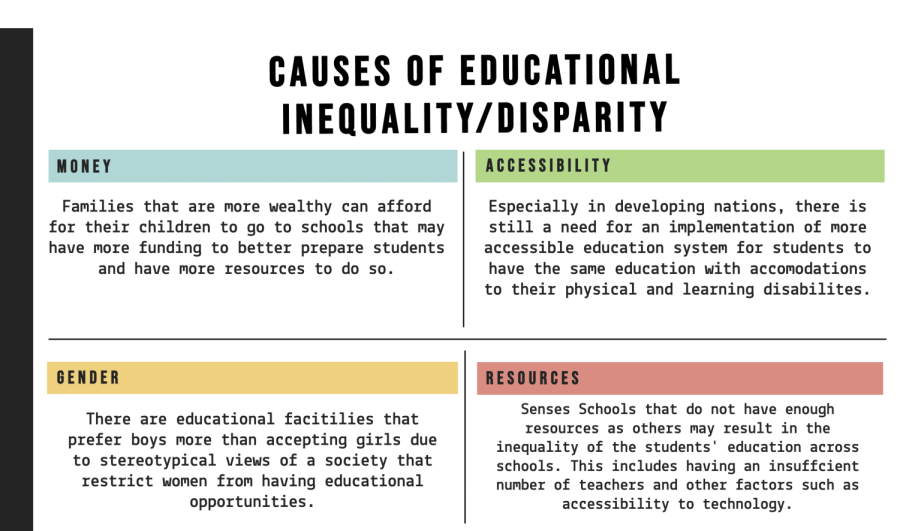Causes of educational disparity
December 23, 2022
“At the end of the day, STEM education is not always a monetary priority for the schools who just don’t have enough to support more than the standard curriculum.”
Although much of the American public tends to assert that institutions of racial discrimination have been torn down, these institutions have left a bloody mark on the nation that leaves minority groups disadvantaged to this day. This idea is especially apparent in the field of education, a sector crucially important to invest in to help reduce wealth inequality.
As the nation modernized during the 1900s, population growth skyrocketed and housing development became an explosive market. New urban and suburban communities sprung up all around the country, and families wished to move into these newer homes to live what has often been deemed the American Dream.
However, the bank industry made it practically impossible for minorities to enter into these new communities of investment. When the average person seeks to purchase a home, they must take out loans from their bank so that they can slowly pay off the expense of the house rather than paying a large sum of money at one moment. In a practice known as “redlining”, banks would look at maps of an area and label communities “desirable”, “declining”, or “hazardous”. Depending on what area a person lived in, they would be offered different rates of credit or none at all.
The striking issue with this practice is the way it targeted minority groups. Communities primarily consisting of Black Americans were the ones deemed “hazardous” in this practice, which gave them no chance to rise economically and socially in the hostile environment of the 1900s.
The impact of this system has left thousands of minorities in inner city communities disadvantaged to this day.
This brings us to the issue of education. In most places throughout the US, public schools are funded through property taxes. This means that in poorer areas, less money is afforded to the public school system. At the end of the day, STEM education is not always a monetary priority for the schools who just don’t have enough to support more than the standard curriculum.
